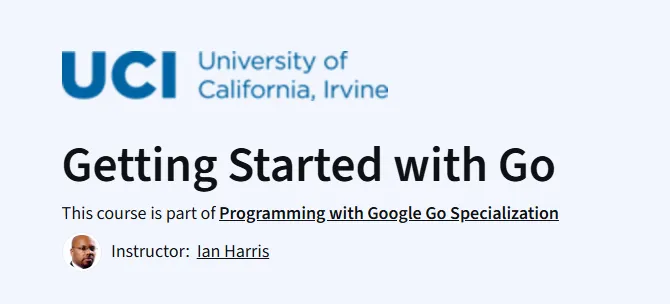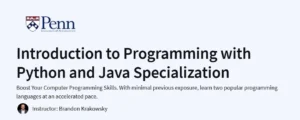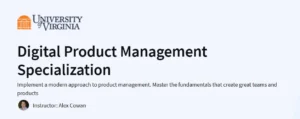What will you learn in Getting Started with Go Course
Set up Go’s development environment and write your first “Hello, World!” program.
Explore Go’s advantages, basic syntax, variables, and workspaces.
Understand data types, including numbers, strings, arrays, slices, maps, and structs.
Handle protocols and formats: learn to work with RFCs and JSON in Go.
Practice writing simple Go programs with peer feedback.
Program Overview
Module 1: Getting Started with Go
Duration: ~2 hours total
Topics: Why learn Go? Advantages, Go’s objects and concurrency, installing Go, workspaces, packages, basic variables and initialization.
Hands-on: Set up your Go environment, write your first “Hello, world!” program, complete a quiz and peer-reviewed assignment.
Module 2: Basic Data Types
Duration: ~4 hours total
Topics: Data types in Go (ints, floats, strings, constants), control flow structures (loops, conditionals), comments, printing.
Hands-on: Use and manipulate data types; practice with control statements; complete readings, exercises, and a quiz.
Module 3: Composite Data Types
Duration: Not specified
Topics: Explore composite types such as arrays, slices, maps, and structs.
Hands-on: Create and manipulate composite data structures; complete module quiz.
Module 4: Protocols and Formats
Duration: Not specified
Topics: Work with RFCs, JSON, and file access using
ioutilandospackages.Hands-on: Read/write JSON, handle files, and complete the module’s quiz.
Get certificate
Job Outlook
Prepares you for roles like Backend Developer, Go Programmer, DevOps Engineer, or Cloud Engineer.
Go is valued in industries needing efficient, scalable backend solutions—especially cloud services and concurrent systems.
Developers with Go expertise often command strong salaries, ranging from ₹10–20 LPA in India to $70,000–$120,000 USD globally.
Specification: Getting Started with Go
|
FAQs
- Basic programming knowledge is recommended but not strictly required.
- Covers Go installation, workspaces, and writing the first program.
- Hands-on exercises reinforce learning from scratch.
- Focuses on foundational concepts like variables, control flow, and data types.
- Ideal for learners aiming to start backend development with Go.
- Covers basic data types: integers, floats, strings, and constants.
- Explores composite data types: arrays, slices, maps, and structs.
- Teaches reading and writing JSON data.
- Includes file handling using
osandioutilpackages. - Provides hands-on exercises to manipulate and process data effectively.
- Prepares learners for roles like Backend Developer, Go Programmer, or Cloud Engineer.
- Focuses on scalable, concurrent programming for efficient backend solutions.
- Offers hands-on coding practice relevant to professional applications.
- Enhances employability in high-demand industries using Go.
- Builds foundational skills for further advanced Go programming courses.
- Total duration: approximately 1 week (6 hours of content).
- Modules include setup, basic data types, composite types, and JSON/file handling.
- Self-paced format allows flexible learning schedules.
- Hands-on exercises and quizzes reinforce practical understanding.
- Suitable for learners seeking a structured, short-term introduction to Go.
- Write a “Hello, World!” program and expand to more complex examples.
- Practice using variables, control flow, and data structures.
- Manipulate JSON and files in practical exercises.
- Receive peer feedback on coding assignments.
- Ensures learners can independently develop basic Go programs.





